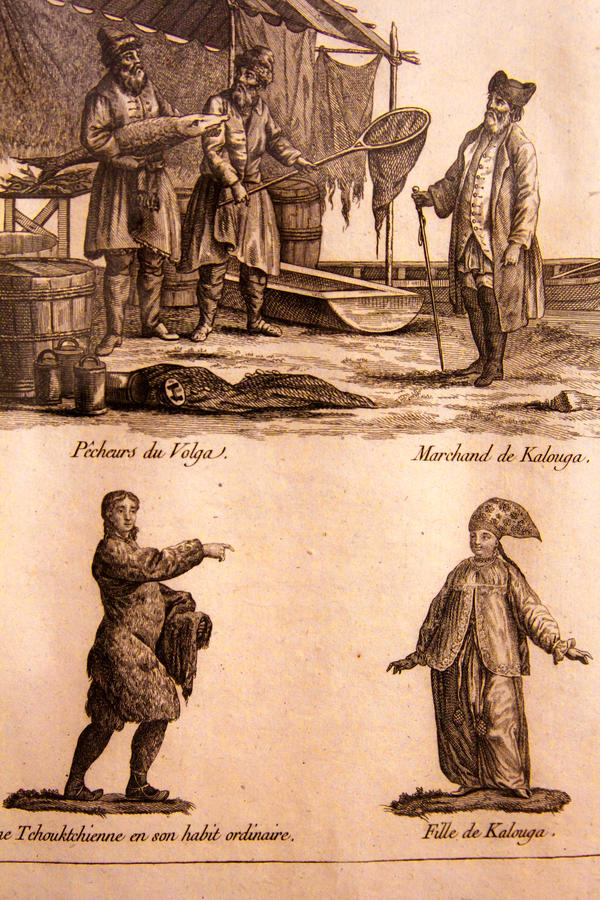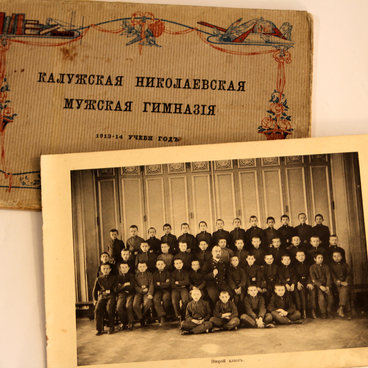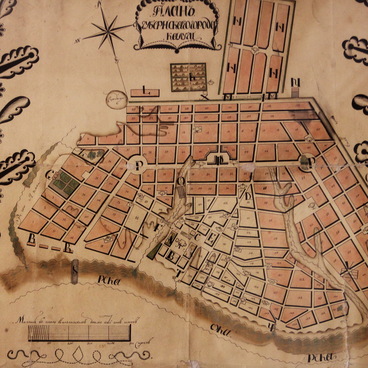The engraving presented at the exposition was first published in The Natural, Moral, Civil, and Political History of Contemporary Russia by Nicolas-Gabriel Le Clerc, a doctor, historian, writer, and translator.
He was born in Baume-les-Dames, France, in 1726. Le Сlerc received an excellent medical education and in 1757 was appointed the first doctor of the French royal troops in Germany. During his service, Le Clerc was promoted to the position of the chief inspector of hospitals.
Hospitals of that time had a special commission preventing various abuses. Le Clerc became chairman of such a commission, and was awarded the Order of St. Michael, a retirement allowance of 6,000 livres and a nobility title for his service. However, he lost his position because of court intrigues and his allowance after the revolution.
Le Clerc first arrived in Russia in 1759 at the invitation of Empress Elizabeth of Russia. He served as the personal attending physician of Count Kirill Razumovsky, the last hetman of Little Russia, for four years, and accompanied him on trips in Russia and abroad. In 1761, Le Clerc was appointed a foreign member of the Imperial Academy of Sciences, and 4 years later - an honorary member. Until 1777, Le Clerc held various high positions serving as physician in ordinary to Grand Duke Pavel Petrovich, inspector of the Pavlovskaya Hospital in Moscow, as well as director of sciences in the land gentry corps and professor and adviser at the Academy of Arts.
Le Clerc wrote poetry, created several works on Russian literature, and translated works of Russian authors into French. The Battle of Chesme by Mikhail Kheraskov, Peter the Great by Mikhail Lomonosov and Oh, These Times! by Catherine II were published in France in his translation.
Le Clerc studied not only literature, but also history. For several years, he composed a six-volume book entitled ‘The Natural, Moral, Civil, and Political History of Ancient[IN1] and Contemporary Russia.’ This work, however, was criticized by Le Clerc’s contemporaries, while Catherine II even decided to write Notes on Russian History in response to his work.
Le Clerc’s publication was supplemented by the Atlas of Drawings by French artist Nicolas de Lespinasse, which included the displayed engraving.
He was born in Baume-les-Dames, France, in 1726. Le Сlerc received an excellent medical education and in 1757 was appointed the first doctor of the French royal troops in Germany. During his service, Le Clerc was promoted to the position of the chief inspector of hospitals.
Hospitals of that time had a special commission preventing various abuses. Le Clerc became chairman of such a commission, and was awarded the Order of St. Michael, a retirement allowance of 6,000 livres and a nobility title for his service. However, he lost his position because of court intrigues and his allowance after the revolution.
Le Clerc first arrived in Russia in 1759 at the invitation of Empress Elizabeth of Russia. He served as the personal attending physician of Count Kirill Razumovsky, the last hetman of Little Russia, for four years, and accompanied him on trips in Russia and abroad. In 1761, Le Clerc was appointed a foreign member of the Imperial Academy of Sciences, and 4 years later - an honorary member. Until 1777, Le Clerc held various high positions serving as physician in ordinary to Grand Duke Pavel Petrovich, inspector of the Pavlovskaya Hospital in Moscow, as well as director of sciences in the land gentry corps and professor and adviser at the Academy of Arts.
Le Clerc wrote poetry, created several works on Russian literature, and translated works of Russian authors into French. The Battle of Chesme by Mikhail Kheraskov, Peter the Great by Mikhail Lomonosov and Oh, These Times! by Catherine II were published in France in his translation.
Le Clerc studied not only literature, but also history. For several years, he composed a six-volume book entitled ‘The Natural, Moral, Civil, and Political History of Ancient[IN1] and Contemporary Russia.’ This work, however, was criticized by Le Clerc’s contemporaries, while Catherine II even decided to write Notes on Russian History in response to his work.
Le Clerc’s publication was supplemented by the Atlas of Drawings by French artist Nicolas de Lespinasse, which included the displayed engraving.



